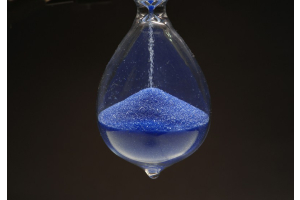Spinraza, the new medicine for spinal muscular atrophy
Last updated: 10 March 2021

You can legally access new medicines, even if they are not approved in your country.
Learn more »Is there substance to the claims that it's a groundbreaking treatment?
What is Spinraza?
Spinraza (nusinersen) is the first and only treatment to ever be approved to treat children and adults with spinal muscular atrophy (SMA) – a rare and often fatal genetic disease affecting muscle strength and movement. It works by altering the synthesis of deficient proteins, increasing the production of full-length ‘survival motor neurons’ and ultimately promoting the maintenance of motor neurons.
Dubbed by doctors as ‘groundbreaking’ and ‘life-changing’, it received its first approval in the US on December 23, 2016, and has since also been approved in the European Union (June 2017), and well as in Brazil, Japan, Switzerland, Canada, and most recently, Australia. Biogen, the medicine’s manufacturer, has submitted regulatory filings for the medicine to be approved in additional countries and intends to initiate more filings in other countries.
Despite promising results shown in clinical trials, and the first-to-market nature of Spinraza, there were only around 4000 patients being treated with Spinraza in early 2018 (Biogen Community Statement). It may not yet be approved or easily accessible for many patients in their own countries, and has only gained formal reimbursement in a few countries.
Parents of children with SMA, however, are able to import the medicine on a ‘named patient’ basis, under certain conditions and with a doctor’s prescription. If you need more information about sourcing a medicine not available in your country, and need help and support in the process, visit our home page to find out how we can help. Our team delivers not yet approved medicines from around the world on daily basis, with service that’s highly rated by doctors and patients.
How effective is Spinraza?
One main study involved 121 babies with SMA (with an average age of 7 months). After one year of treatment, more than 50% of the babies receiving Spinraza (nusinersen) (37 out of 73) showed progress in developing head control, rolling, sitting, crawling, standing and walking, whereas no similar progress was seen in any of the babies who received placebo. Furthermore, at the end of the study (13 months) about 60% of the patients on Spinraza were still alive and didn't need permanent ventilation compared with about 30% of the untreated patients.
The manufacturer's website states how "2 of 4 individuals with Type 3 SMA regained the ability to walk independently" – which is remarkable. (This result did include 'open-label' studies – not just the clinical trial on infants. An open-label study is one where researchers and participants are aware of the medication being used, instead of the standard double-blind clinical studies where neither patient nor doctors are aware of the medication or placebo allocation.
Another study with babies with a later onset of SMA (after 6 months of age) also saw an improvement in more than half of its participants; of those given Spinraza (nusinersen), 57.3% saw an increase of at least 3 points on the Hammersmith Functional Motor Scale Expanded (HFMSE), compared to only 20.5 % of patients in the control group.
How is Spinraza used in treatment?
Spinraza (nusinersen) is a prescription only medicine, so a treatment plan should be prepared by a specialist in the patient’s country with experience in the treatment of SMA.
Currently, the medicine is provided as a solution for injection in 12 mg vials. The recommended dose is 12 mg (one vial), given as soon as possible after the patient has been diagnosed with SMA. The first dose should then be followed by 3 more doses after 2, 4, and 9 weeks and then one dose at 4 month intervals. This is of course standard guidance – your treating physician may decide differently. For further information, see the package leaflet.
The medicine must be administered by intrathecal injection (into the lower back, directly into the spine) by a specialist.
How can I access Spinraza?
Whilst Spinraza (nusinersen) has already been approved by regulatory authorities in many countries, as with every medicine, it can still take some time for the medicine to actually become available within the country’s healthcare system. Spinraza (nusinersen) has still not yet been approved in many regions, including South America, non EU countries in Europe, Africa, most of Asia and the Middle East. (If you are not able to access Spinraza directly in your country, we may be able to help you – more about the service we provide on this page.)
While the medicine is very expensive, there are procedures for financial assistance in at least two countries:
- People living in the USA can apply for financial assistance on this website.
- In Italy it is reimbursed by the national health system and will be administered in specialised regional centres. For more information please click on this link.
- In France, the Haute Autorité de Santé (HAS, the French National Authority for Health) has stated that Spinraza has no comparative treatments, so the Economics Committee for Health Products (CEPS) can negotiate a price on behalf of patients, allowing standard access to the drug and government reimbursement. However this process can take up to a year.
If you have any questions about accessing Spinraza in your country or any other medicines that are not available in your country, please contact our support team.







